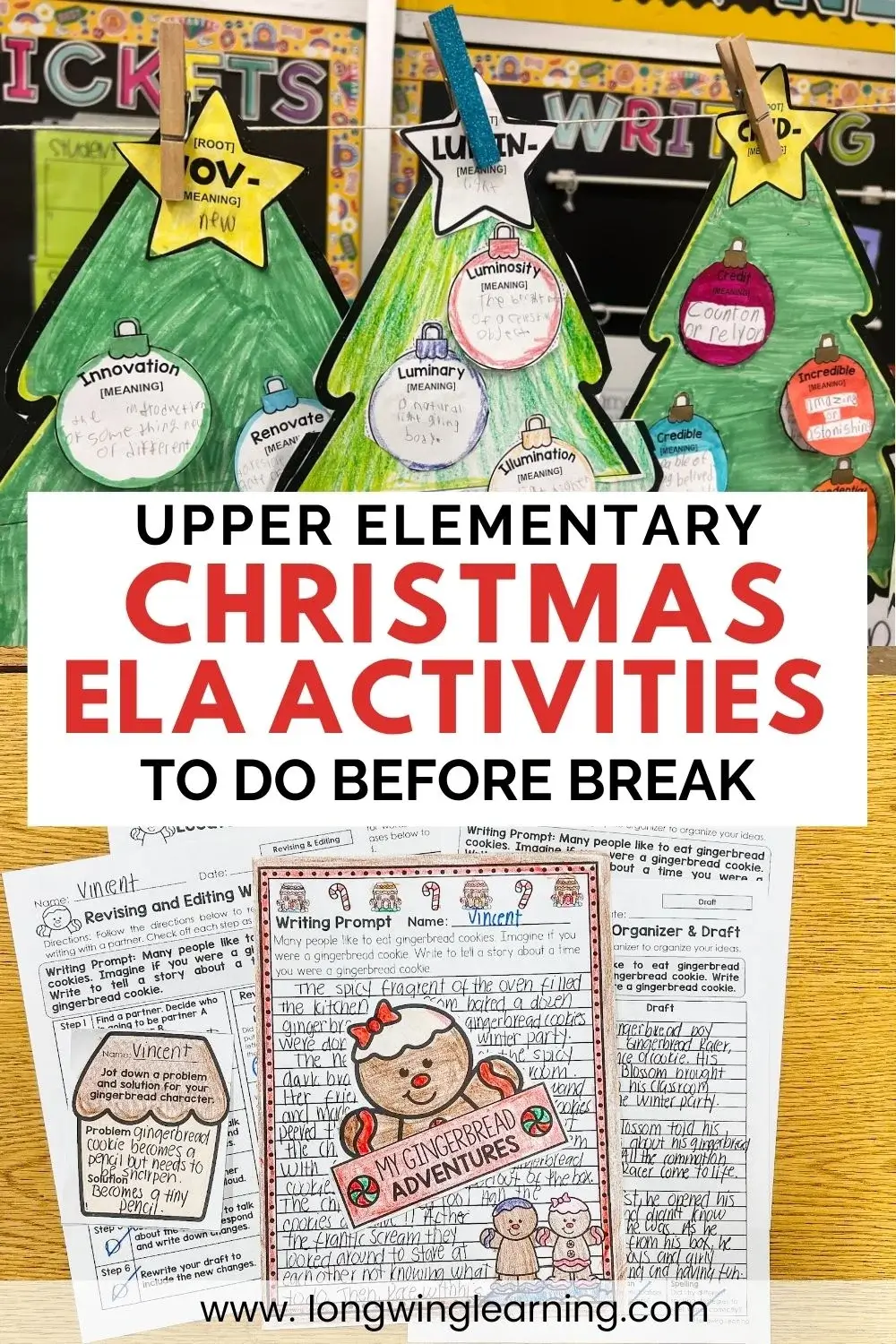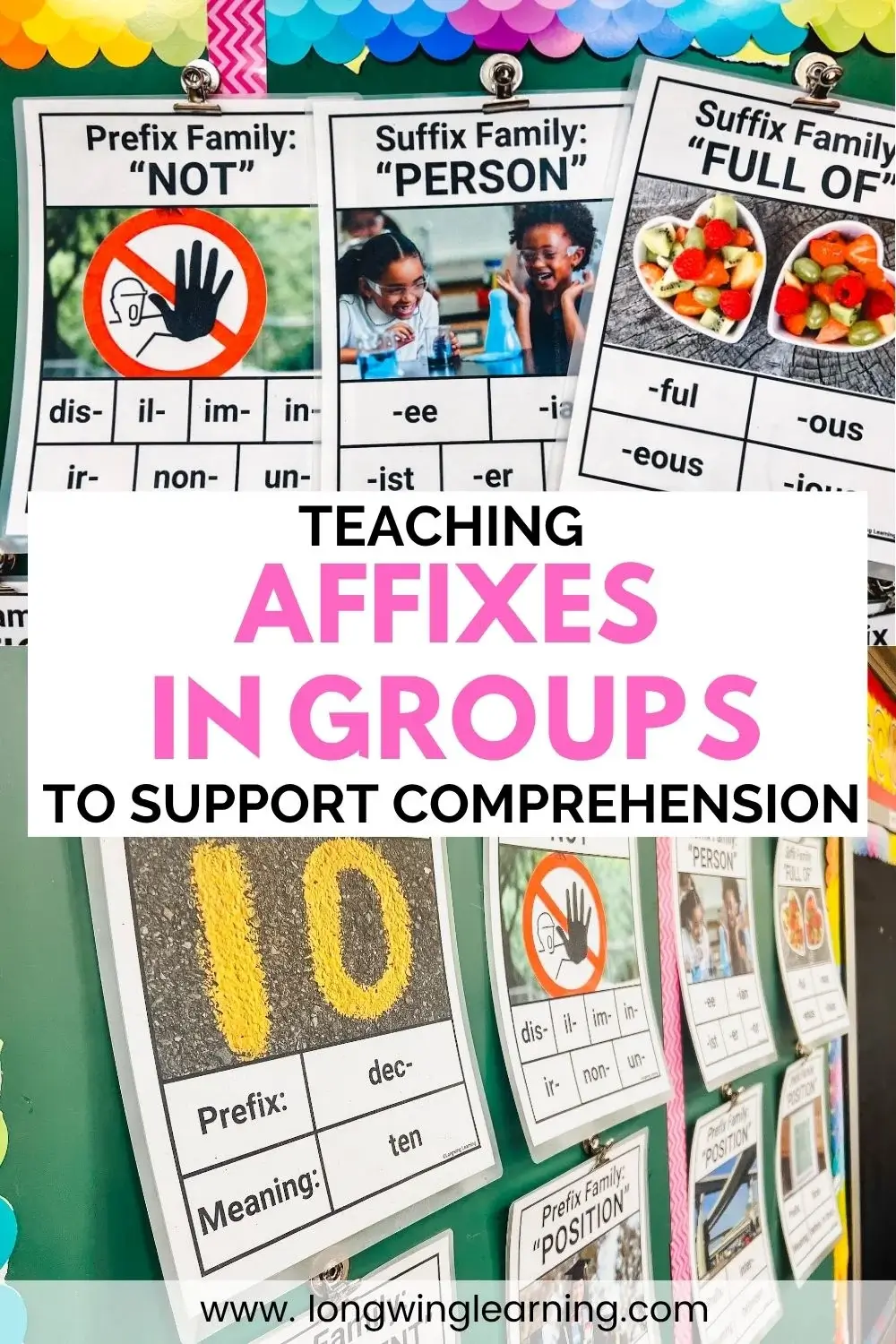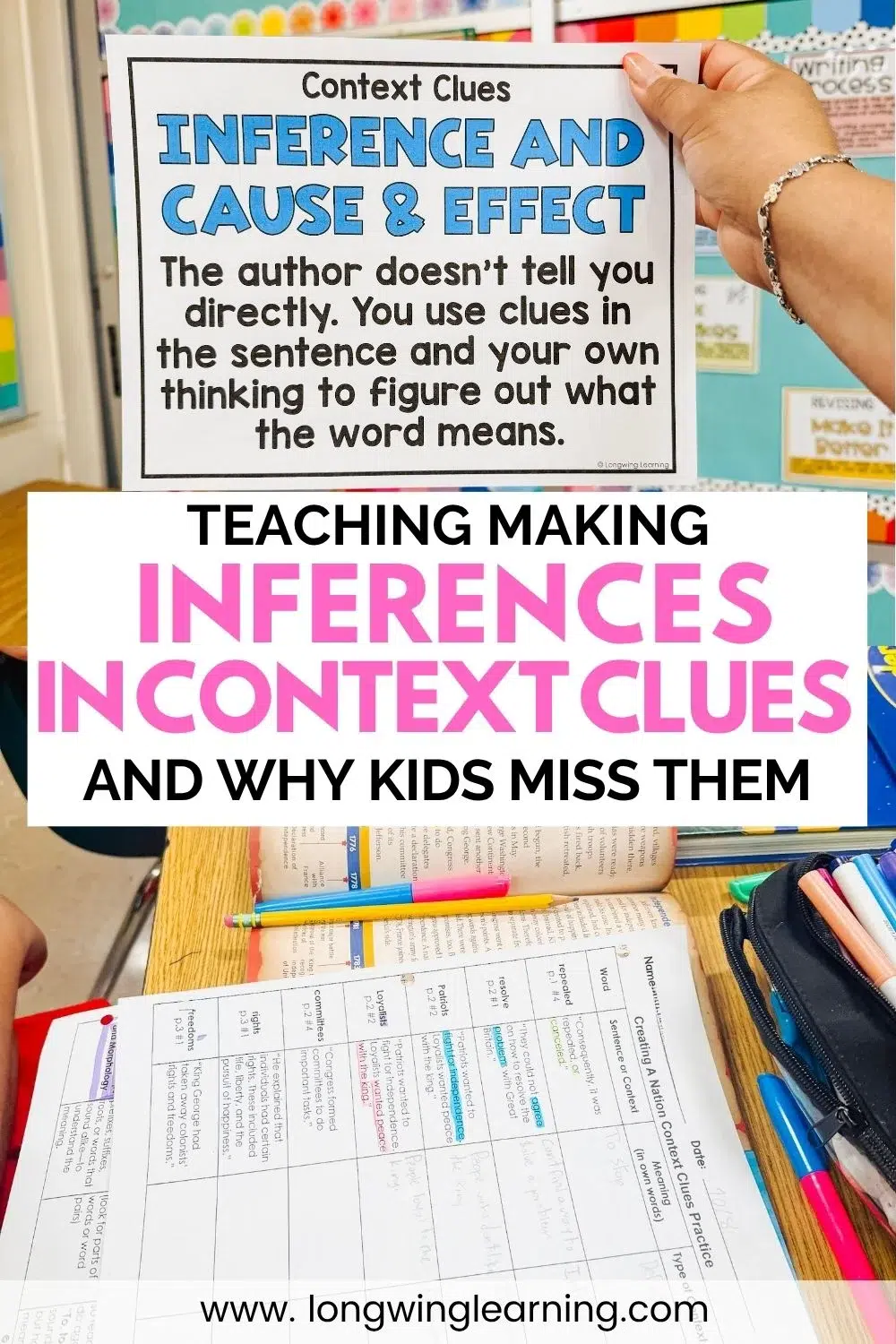Here’s a twist on teaching introduction paragraphs while adding a little fall fun to this writing lesson.

As the leaves start to change, it’s the perfect time to start transitioning my fourth graders from paragraph writing to multi-paragraph essay writing.
We all know that writing an essay can feel like a big jump for students who are used to sticking to single paragraphs.
The challenge is helping them see how to build on those writing skills without overwhelming them.
With the fall season in full swing, I decided to bring a bit of that seasonal spirit into the classroom by teaching introduction paragraphs using a candy corn graphic organizer.
It was a fun way to ease them into something new while keeping them engaged with a simple, festive twist.
Plus, the promise of a little candy corn at the end didn’t hurt!
In this post, I’ll explain how I created an interactive lesson using a candy corn graphic organizer to teach introduction paragraphs.
This approach helped my students break down each part clearly and feel confident starting their multi-paragraph essay.
By the end, you’ll have a fun, fall-themed writing lesson to teach your students the parts of an introduction, along with a step-by-step guide and anchor chart you can download and use in your classroom!
Table of Contents
The Importance of Teaching Introduction Paragraphs
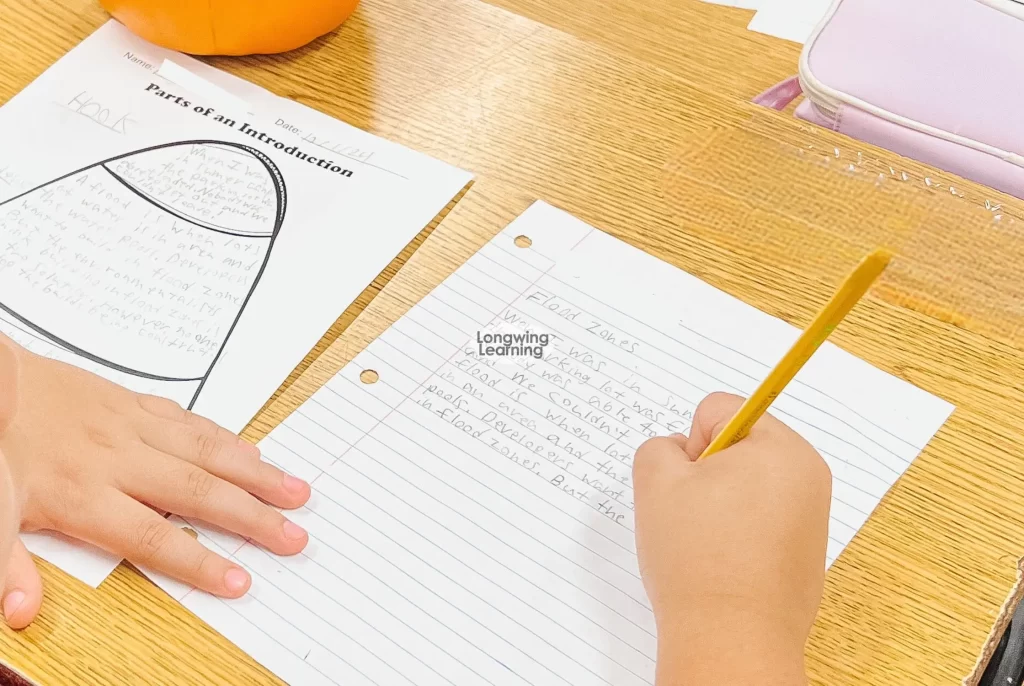
Teaching students how to write a good introduction is as important as showing them how to write body paragraphs.
In fact, by breaking it down into smaller, manageable parts, students can see how the introduction grabs attention and introduces the topic or main idea.
Skipping this step or rushing through it leaves students needing help with how to start, often resulting in weak, scattered writing.
The Parts of an Introduction Paragraph for an Essay
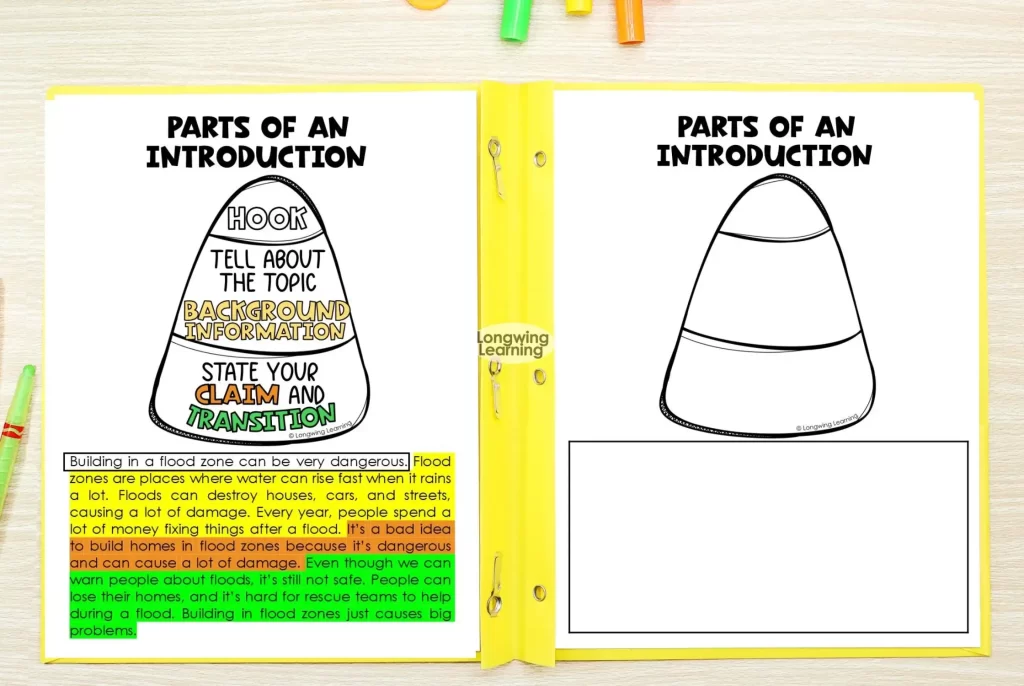
An introduction has three main parts in an essay: the hook sentence, the background information, and the claim or thesis statement.
The hook sentence is the first, whose purpose is to grab the reader’s attention immediately.
The background information follows, providing details about the topic so the reader understands why it matters.
Next comes the claim or thesis statement, which states the writer’s opinion or stance.
Finally, the last sentence leads straight into the body paragraphs, preparing the reader for the complete essay.
Teaching this structure helps students see how every part of an introduction contributes to building a solid essay from the start.
Teaching Introduction Paragraphs to Upper Elementary Students
Below is the framework I am using to teach the parts of an introduction.
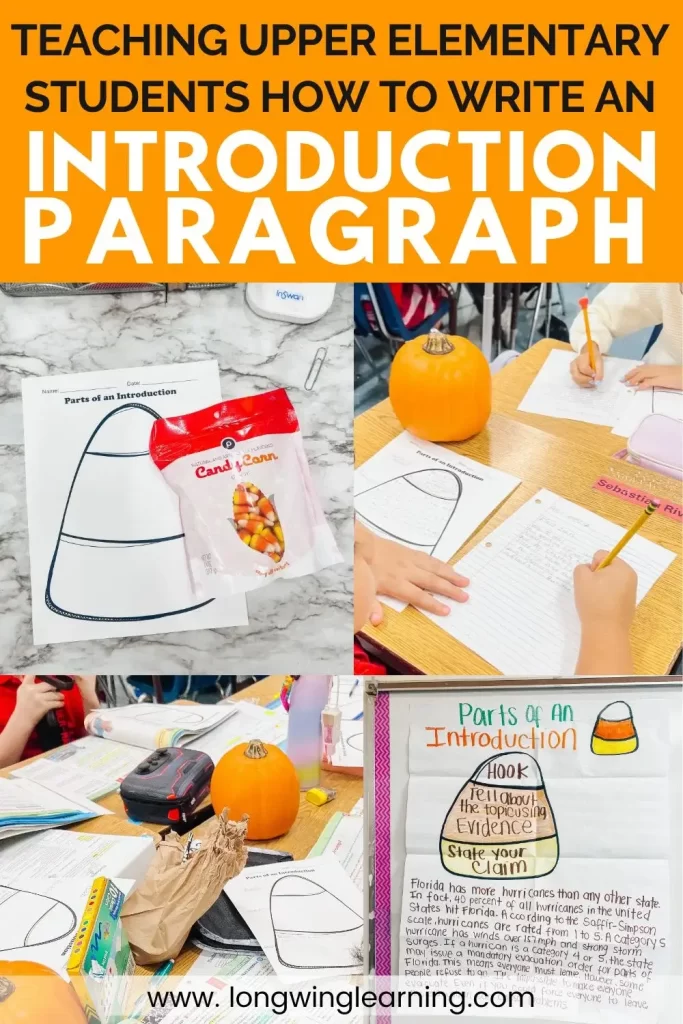
Day 1: Laying the Groundwork

On the first day, we focused on teaching an introduction paragraph by reviewing the state’s writing rubric and stressed the need to include an introduction in every multi-paragraph essay.
Then, we analyzed a sample essay from our reading book by labeling the different parts of the introduction and highlighting sentences to label the hook, background information, and claim.
We wrapped up the lesson by having students recall the three parts of an introduction on sticky notes.
The sticky notes were placed on our classroom “parking lot” (a go-to place for ideas and quick notes).
If this is the first time you have heard of a classroom parking lot, check out my sticky note post on using this strategy to assess students’ understanding quickly.
Day 2: Building Momentum with Candy Corn
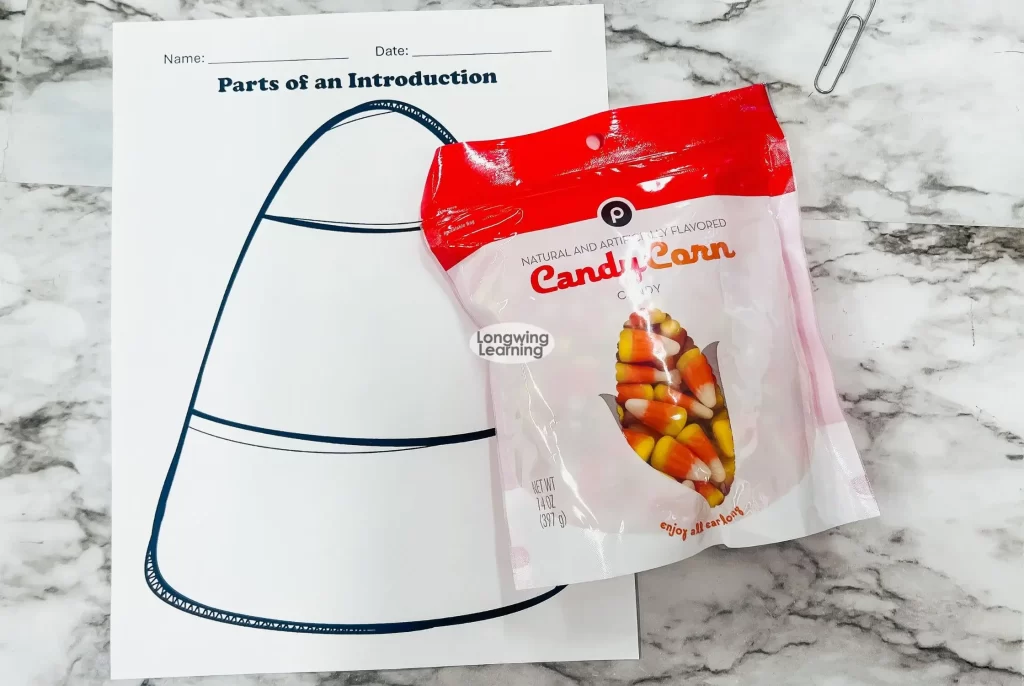
We started with a retrieval practice exercise on the second day using the “Wheel of Names.”
Instead of student names, I filled the wheel with the three parts of an introduction. As the wheel spun, students recalled what they knew about each term.
After that refresher, I introduced the candy corn anchor chart and used it to review the three parts of an introduction.
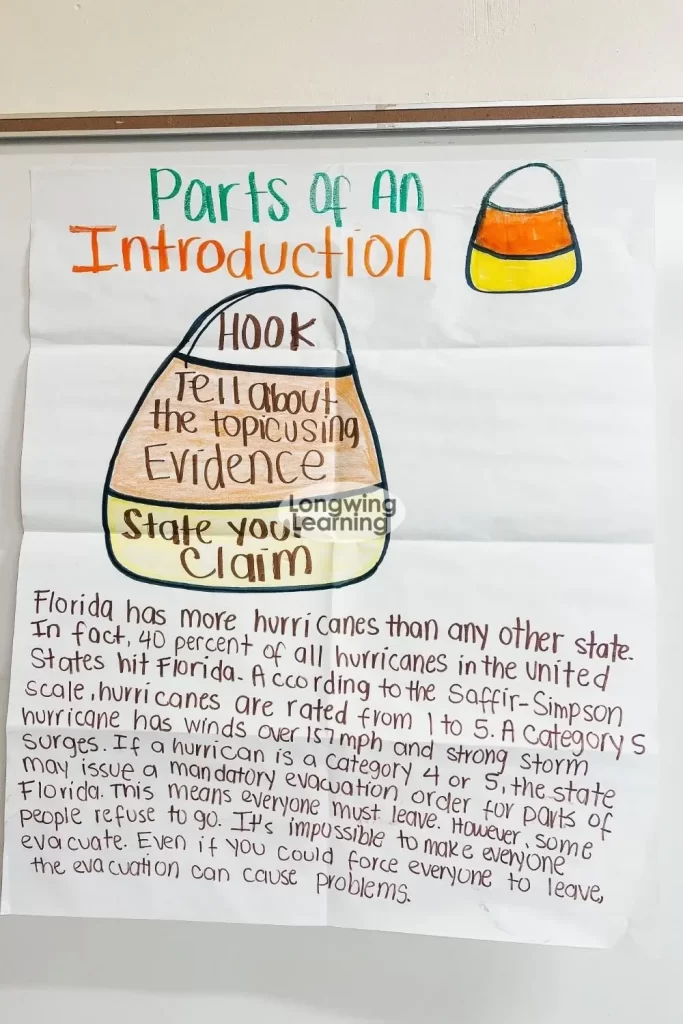
We then read the writing prompt together, analyzed it, and handed out the candy corn graphic organizer with actual candy corn (because who doesn’t love a little treat during writing time?).
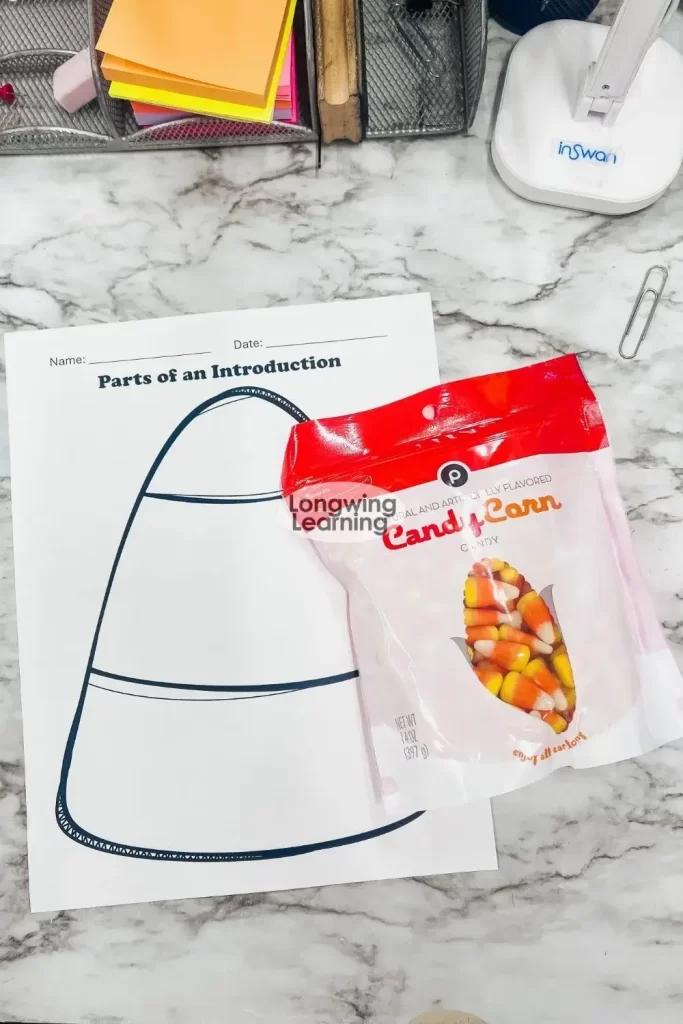
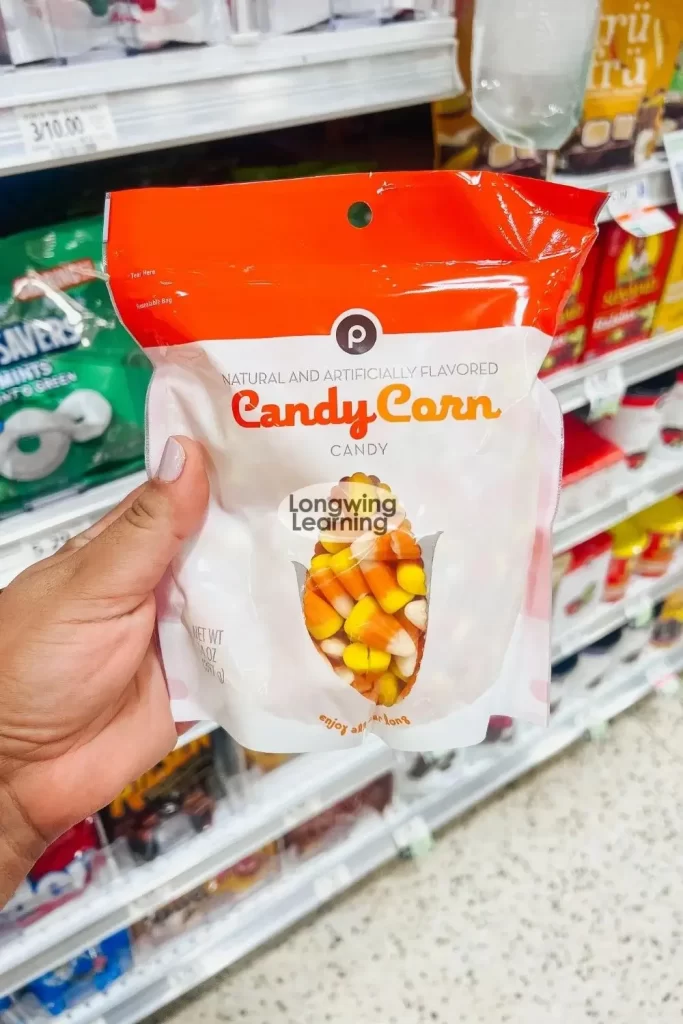
Filling in the Candy Corn Organizer

We labeled the parts of an introduction on the side of the graphic organizer, and interestingly enough, we filled it out from the bottom up!
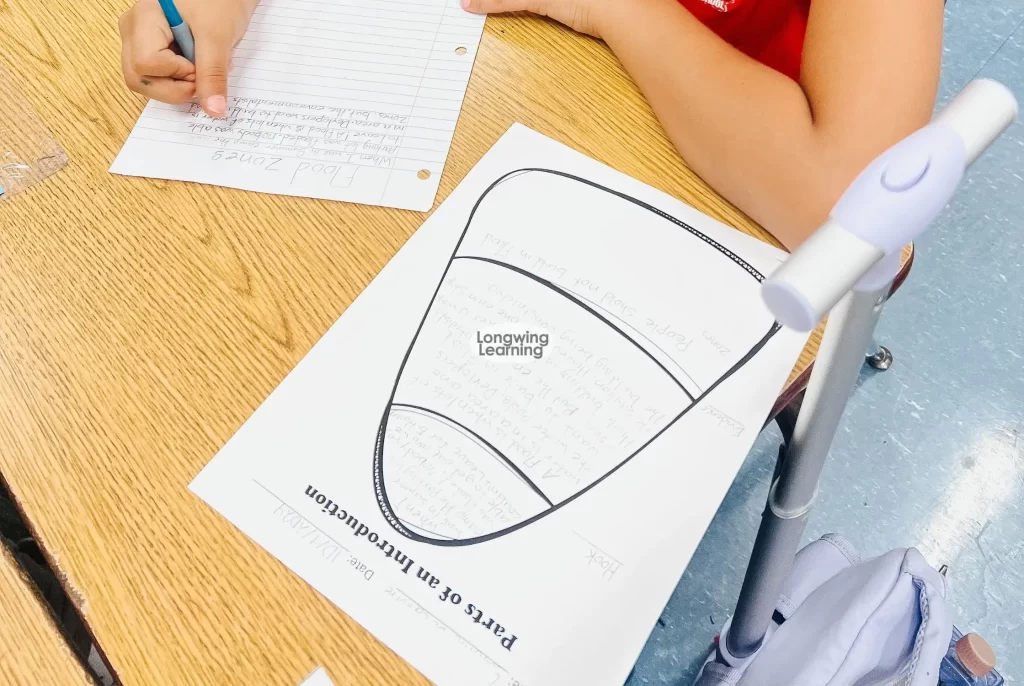
The students were eager to start with their claim since they had strong opinions from the get-go.
They were already familiar with the essay topic because we had completed a close read of the passages.
After writing their claim, they skimmed the reading passages to provide background information based on the topic. For this essay, they wrote about flood zones in Florida.
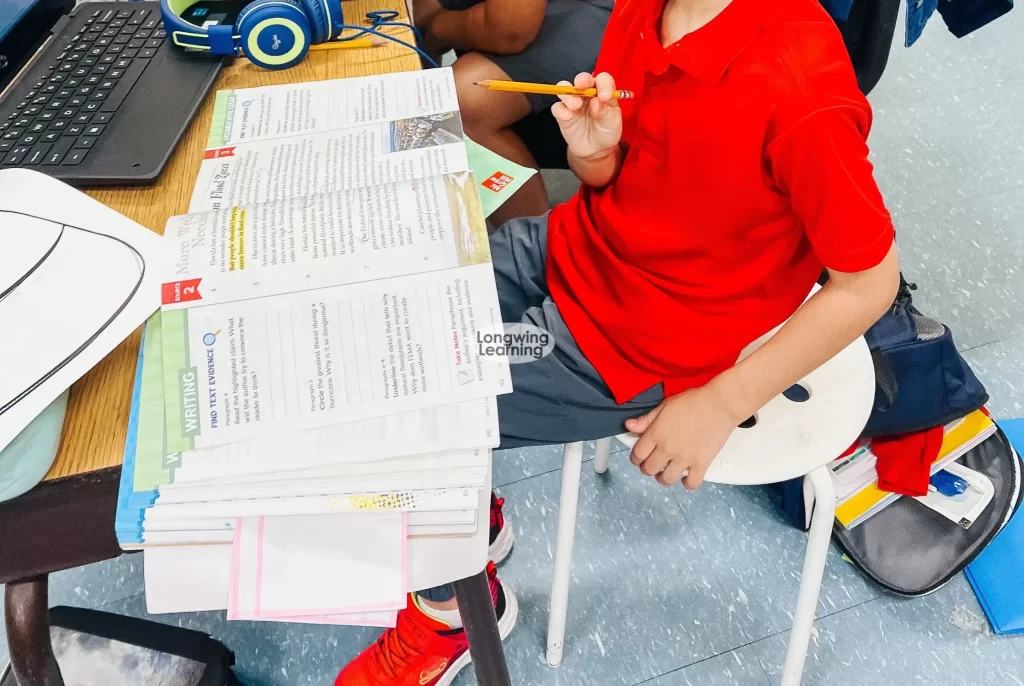
Last, we tackled writing a good hook. Using the worksheet about hooks, I introduced them to three out of eight types of hooks.
However, introducing the different types of hook sentences is another writing lesson requiring time and practice to discuss the different ways to catch the reader’s attention.
While it’s a good idea to teach the basics first, I briefly introduced sentence starters for the hook and moved on, knowing we would dive deeper into it in a future lesson.
I usually use one hook that fits our topic, but I introduced two types because we had already discussed writing figurative language in a reading lesson.
If you’re interested in how I teach figurative language like simile and idioms, check out my posts for more details!
Since many of the students personally connected with the topic, we decided to use the hook “a personal connection” for this essay.
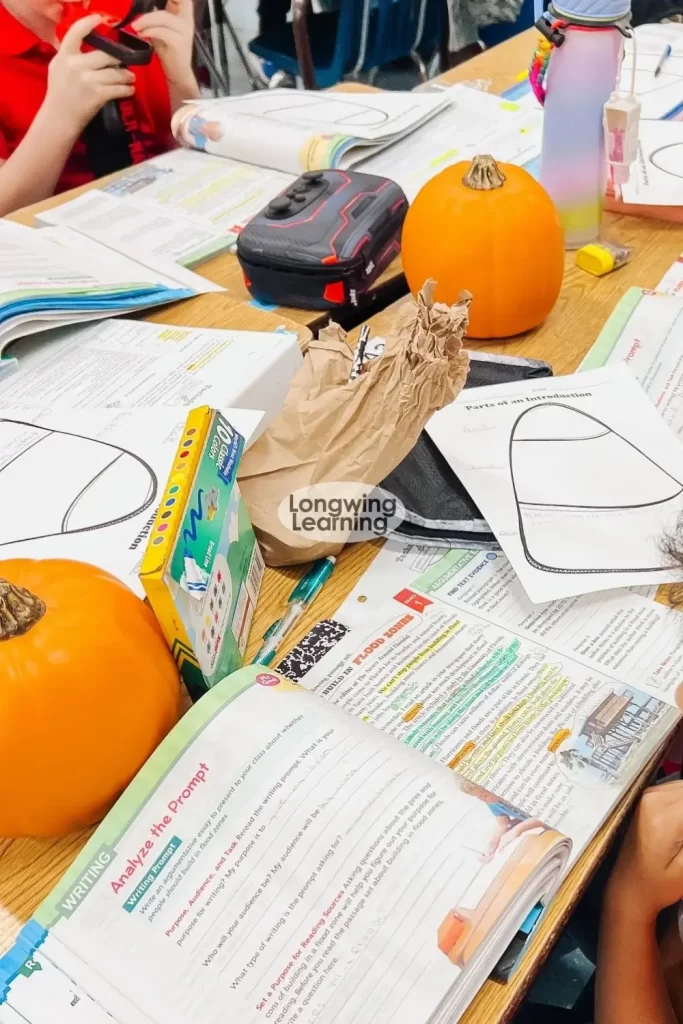
Finally, it was time to organize the sentences into a whole paragraph. The students used the candy corn graphic organizer to write their sentences, transforming what they had worked on into an introductory paragraph.

Seeing how their ideas came together from just a few sentences into a full paragraph was a light bulb moment for them. Writing it down on paper before typing it out helped the writing process stick.
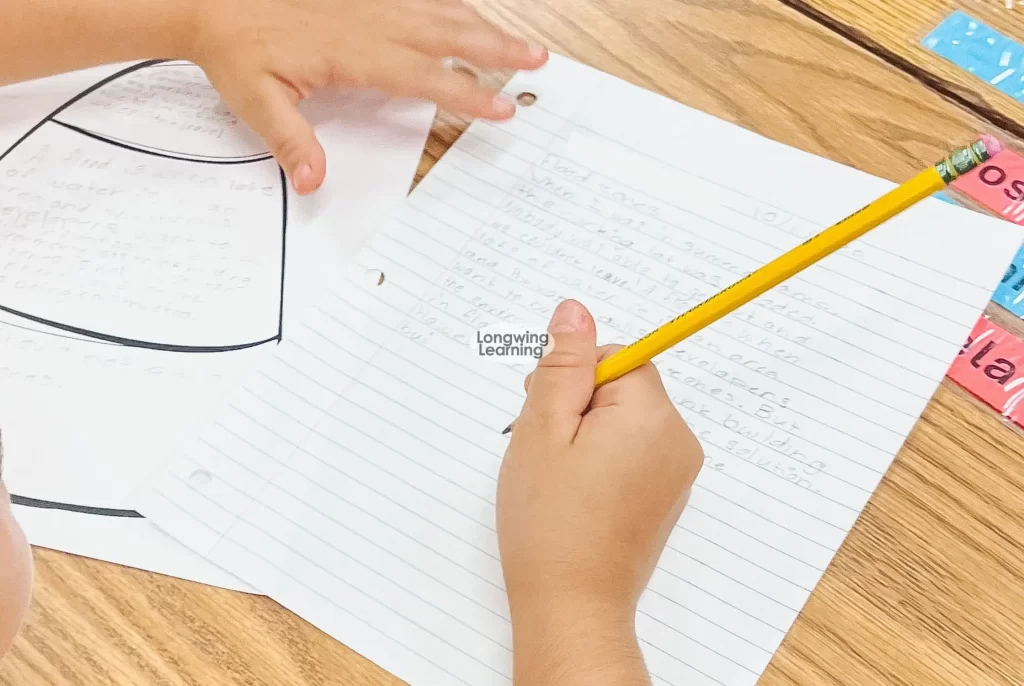
Ideas for Differentiated Teaching Introduction Paragraphs
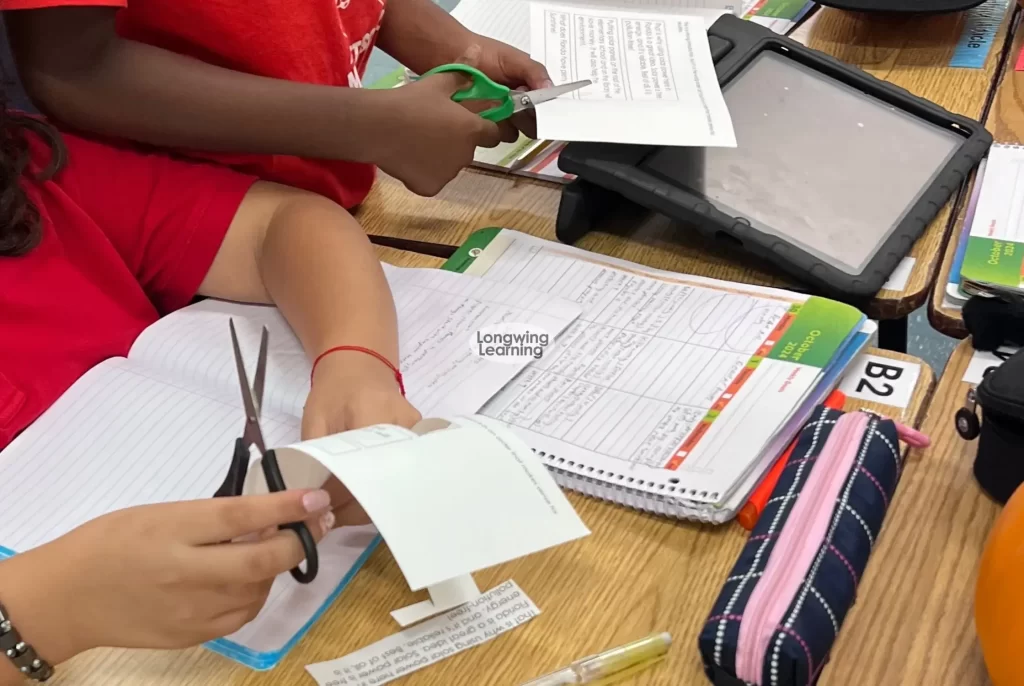
When it comes to teaching writing, we know that one size doesn’t fit all. Some students need more structure and guidance, while others are ready to tackle the task with a bit more independence.
For this reason, I like to differentiate my lessons to ensure the success of all students, regardless of their learning styles.
Teaching Introduction Paragraphs to Struggling Writers
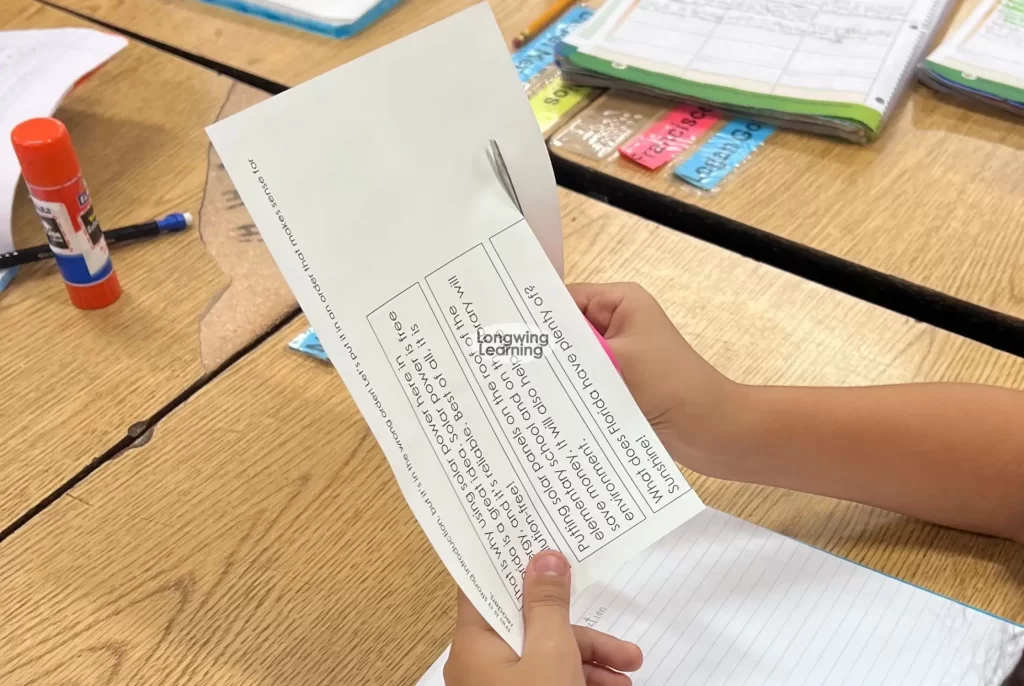
When teaching introductory paragraphs, I offer sentence starters to struggling writers to help guide their thinking.
If you’re unfamiliar with sentence starters, they’re starter phrases that help students begin their sentences and organize their thoughts when writing.
A sentence starter for this topic might look like, “Floods can be dangerous because _____,” or “My family had to evacuate when ____.”
Sentence starters give students a starting point and help them focus on developing their ideas without feeling overwhelmed.
Another way I differentiate is by writing an introduction paragraph out of order and then letting students cut and paste it together.
This hands-on activity helps identify who needs more support with understanding the parts of an introduction or who needs more guidance on what to write.
I like to do this activity in small groups because it helps me pinpoint areas where students need more guidance.
Teaching Introduction Paragraphs to Independent Students
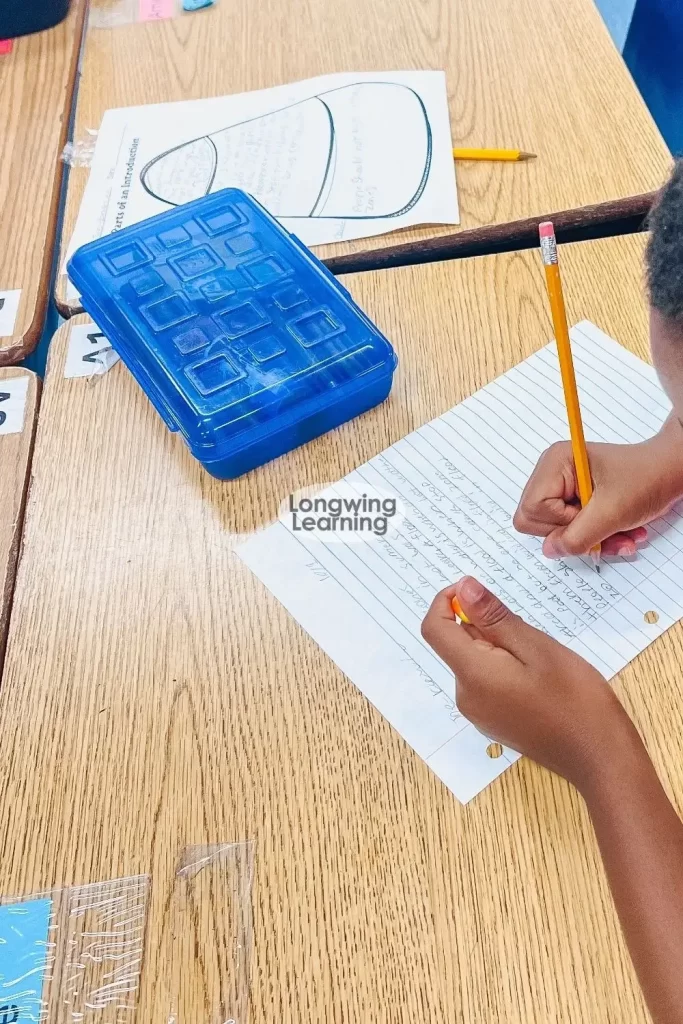
For my more advanced students, I like to mix things up by encouraging them to come up with their hooks or explore different ways to craft their claims.
I also emphasize the importance of key words and word choice, guiding them to consider which vocabulary words they can substitute for something more precise.
This approach allows them to express their ideas while sticking to the structure we have covered in class.
Another way I differentiate is by offering students the choice between different graphic organizers.
While the candy corn organizer works well for most, some students benefit from a more linear outline.
Differentiating instruction this way makes the mini-unit writing lesson effective and helps build student confidence.
Writing Practice Ideas After Teaching Introduction Paragraphs
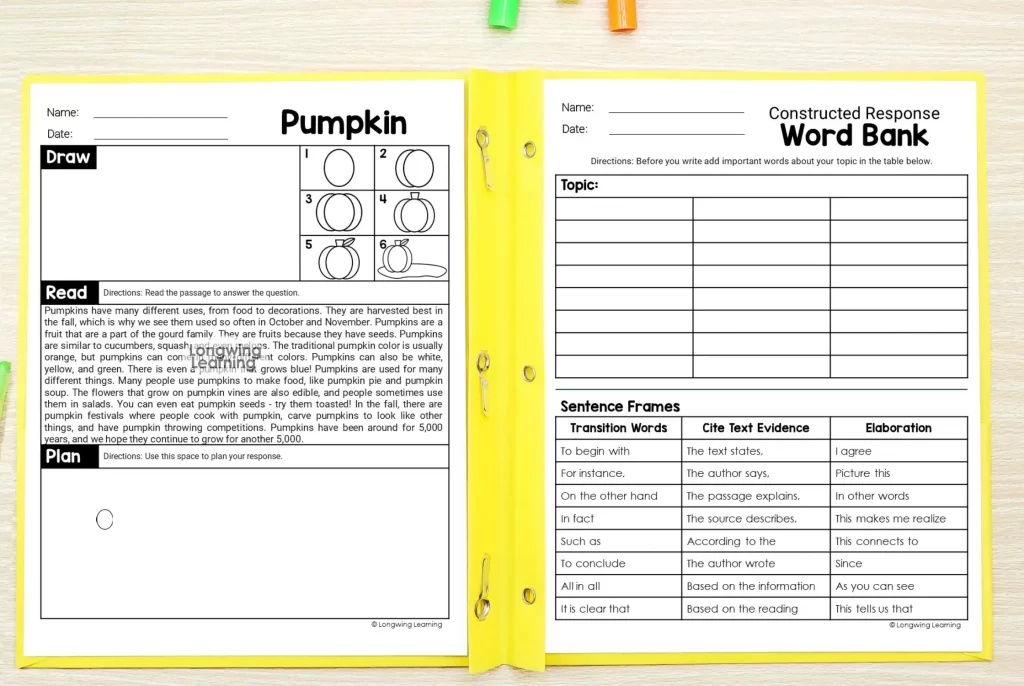
Fall Writing Practice Worksheets
Teaching introduction paragraphs is just the first step. The next step is ensuring students get enough practice to keep those skills fresh.
Without practice, it’s easy for them to forget how to write a strong introduction.
To continue the fall theme, I’m using these fall writing practice worksheets, which feature short passages and allow us to zero in on writing strong introductions.
I’ve been assigning these worksheets during our center rotations, and the kids enjoy completing them.
They’ve been incredibly excited about following the directions in the directed drawing activity that ties into the writing topic.
Peer Review and Editing
Have students write their introduction paragraphs and then swap with a partner for feedback.
Using a checklist, they can identify whether their partner’s paragraph includes all three parts: hook, background, and claim.
Writing Journal
Set aside a few minutes for students to write a new introduction paragraph in their writing journals.
You can use the same or different prompts to practice creating strong hooks and claims.
Introduction Paragraph Scavenger Hunt
Have students look for examples of introduction paragraphs in books or articles they read.
They can highlight or mark the hook, background, and claim, which will help them identify these parts in real-world writing.
I love incorporating this routine to highlight what writers do during my reading block.
I have students copy down hooks they found interesting in their writing journals. Later, they can refer to them or use them as sentence starters.
Wrapping Up Teaching Introduction Paragraphs
Wrapping up this lesson with the candy corn graphic organizer added a fun fall twist to our classroom and helped my fourth graders understand the parts of an introduction.
Students felt confident about writing an introduction by breaking it down into the hook, background information, and claim.
Plus, using the graphic organizer made it easy for them to see how their ideas went from individual sentences into a complete introductory paragraph.
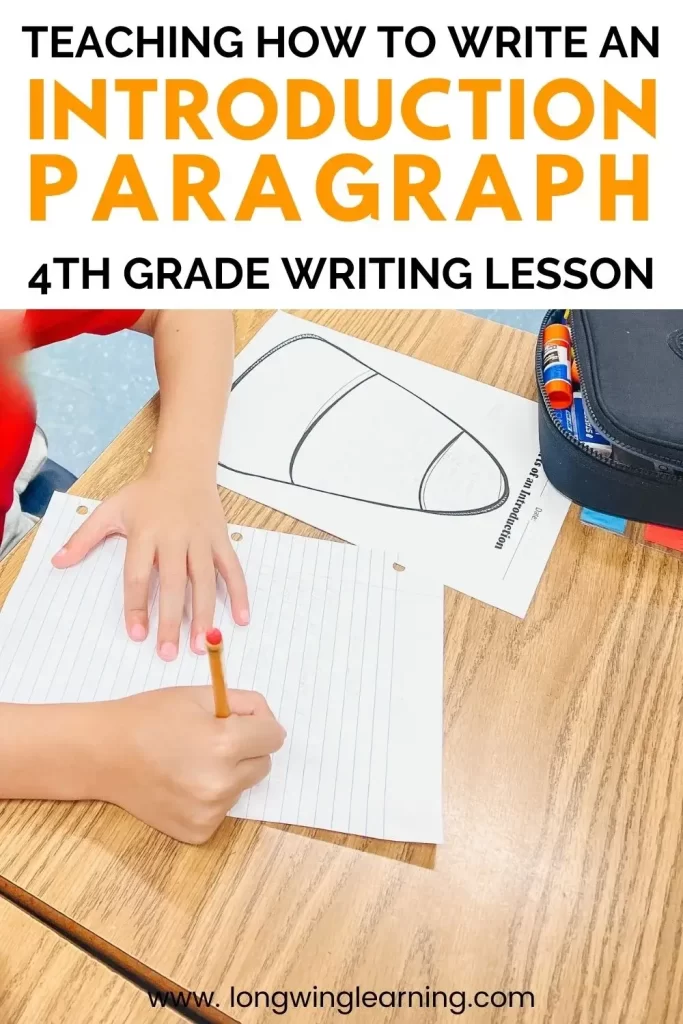
Want to try this lesson in your classroom? Download the candy corn graphic organizer and template by signing up for my email list.
It’s a fun and easy way to teach the parts of an introduction, and your students will love the fall vibe!
Check Out Other Writing Activities and Lessons
- How to Teach Paragraph Writing: From Sentences to Paragraphs in 5 Days
- Practical Strategies for Teaching Elaboration and Adding Detail in Writing
- How to Help Students in 4-5 Analyze a Writing Prompt
- How to Explain Text Evidence to Boost Writing Skills in 4th Grade: A Writing Strategy
- Teaching Topic Sentence: A Hands-On Writing Strategy







